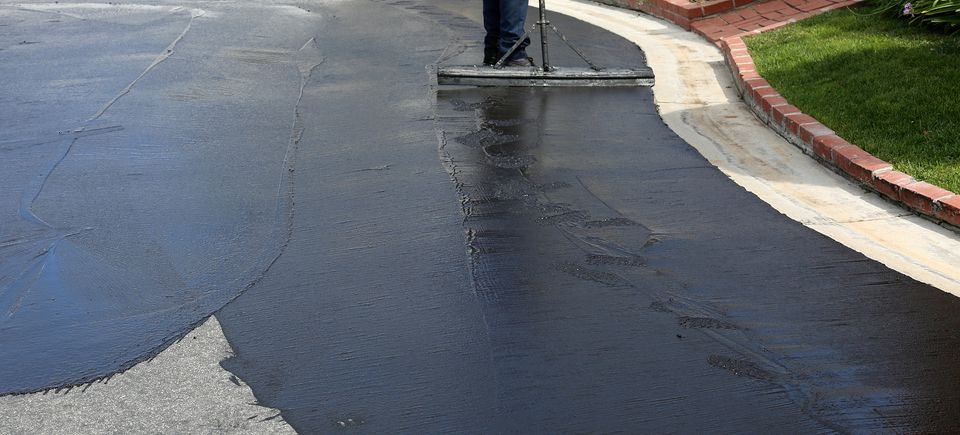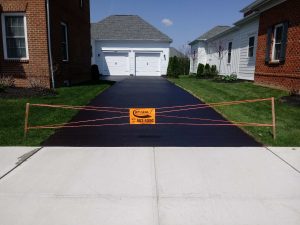Warm Mix Asphalt: A Lasting Service for Pavement
Hot Mix Asphalt (HMA) has actually arised as a leading sustainable option for sidewalk options, providing a myriad of ecological advantages and innovative modern technologies. Its ability to reuse materials and reduce energy consumption presents an engaging instance for its adoption in roadway building and construction jobs. Moreover, the lasting efficiency and longevity of HMA make it a favored choice for infrastructure growth. As the demand for environment-friendly building methods grows, exploring the subtleties of HMA's sustainability can offer beneficial insights into the future of pavement solutions.
Environmental Advantages of Hot Mix Asphalt

Moreover, Hot Mix Asphalt assists to minimize city heat island impacts. Its dark shade absorbs sunshine, reducing the amount of heat reflected back right into the atmosphere contrasted to lighter-colored sidewalks. This can decrease ambient temperature levels in metropolitan locations, reducing the demand for air conditioning and eventually decreasing power intake.
Additionally, Hot Mix Asphalt adds to enhanced stormwater monitoring. Its permeable nature allows water to reenergize and infiltrate the pavement groundwater materials, reducing overflow and the risk of flooding. These environmental advantages make Hot Mix Asphalt a lasting selection for leading roadways and freeways.
Power Performance in HMA Production
Is energy effectiveness a vital consider the manufacturing of Warm Mix Asphalt (HMA)? Absolutely. Energy plays a substantial duty in the production of HMA, affecting both expense and environmental sustainability. One essential aspect of energy efficiency in HMA manufacturing is making use of cozy mix asphalt (WMA) modern technologies (angled parking). WMA allows for the mixing and positioning of asphalt at reduced temperature levels contrasted to standard warm mix asphalt, resulting in reduced energy intake throughout production. This process not only reduces gas usage but also decreases greenhouse gas emissions, making it a much more eco-friendly option.
Furthermore, innovations in plant technologies have actually led to even more energy-efficient HMA manufacturing processes. By optimizing power usage in HMA production, the sector can decrease its carbon impact while maintaining high-quality sidewalk materials.
Recyclability of Warm Mix Asphalt
The recyclability of Warm Mix Asphalt (HMA) is an essential aspect of its sustainability and long-term ecological effect. HMA is just one of one of the most recycled products in the USA, with over 100 million lots of reclaimed asphalt sidewalk (RAP) being recycled annually in brand-new sidewalk construction. Reusing HMA supplies several ecological benefits, such as reducing the need for virgin products, reducing energy usage throughout production, and lowering the amount of waste sent out to garbage dumps.
The procedure of reusing HMA involves milling the existing pavement, crushing it into smaller sized items, and blending it with new aggregate and asphalt binder to produce a recycled mix. In general, the recyclability of HMA plays a significant duty in advertising lasting methods within the sidewalk industry.

Long-Term Efficiency of HMA
Asphalt sidewalks show durability and durability over an extensive period, mirroring the long-lasting performance of Warm Mix Asphalt (HMA) The durability of HMA can be connected to its ability to stand up why not try this out to hefty web traffic loads, harsh weather, and the impacts of aging. Research studies have shown that well-designed and properly constructed HMA pavements can last for 20 years or even more with regular upkeep. The key to taking full advantage of the long-lasting performance of HMA depends on making use of top notch materials, adhering to best techniques in building and construction, and applying reliable maintenance strategies. Appropriate drain, routine examinations, and timely repairs are necessary for preserving the architectural stability of HMA pavements with time. Additionally, advancements in HMA modern technology, such as making use of polymer-modified binders and cozy mix asphalt, have actually further improved the resilience and long life of HMA sidewalks. By focusing on high quality building and construction and maintenance techniques, HMA remains to show itself as a lasting and cost-effective solution for lasting sidewalk framework.

HMA: Durability and Sustainability
Demonstrating both sturdiness and sustainability, Warm Mix Asphalt (HMA) has actually come to be a foundation in the construction of durable sidewalk frameworks - angled parking. HMA's resilience originates from its capability to endure hefty lots, harsh climate condition, and high traffic quantities, Click This Link making it a dependable option for highways, freeways, and airport terminal paths. The make-up of HMA, which generally includes accumulations, binder, and filler, plays a crucial duty in boosting its long life and resistance to deterioration
Additionally, HMA's sustainability depends on its recyclability and energy-efficient production procedure. The capacity to reuse reclaimed asphalt sidewalk (RAP) in brand-new HMA mixtures minimizes the need for virgin materials and reduces the environmental effect of sidewalk construction and maintenance. Furthermore, the power effectiveness of producing HMA hinges on its reduced blending temperature levels compared to other sidewalk products, resulting in reduced energy consumption and greenhouse gas exhausts.
Verdict
Finally, hot mix asphalt (HMA) provides a sustainable solution for pavement with its eco-friendly qualities. HMA's recyclability, power effectiveness in production, and long-lasting toughness make it an environment-friendly selection for road building and construction. By saving all-natural resources, minimizing waste, and reducing greenhouse gas discharges, HMA plays a vital role in promoting sustainability in framework development. Its capacity to mitigate city heat island impacts further emphasizes its significance in developing environmentally mindful click site and resistant pavement systems.
HMA is one of the most recycled products in the United States, with over 100 million loads of reclaimed asphalt pavement (RAP) being reused annually in new pavement construction.The procedure of recycling HMA involves crushing the existing pavement, squashing it into smaller pieces, and mixing it with brand-new accumulation and asphalt binder to create a recycled mix.Asphalt pavements show toughness and resilience over an extended period, showing the lasting performance of Warm Mix Asphalt (HMA) In addition, advancements in HMA technology, such as the usage of polymer-modified binders and cozy mix asphalt, have actually better enhanced the durability and longevity of HMA pavements. The capacity to reuse recovered asphalt sidewalk (RAP) in brand-new HMA mixtures lowers the need for virgin products and decreases the ecological effect of sidewalk building and construction and upkeep.